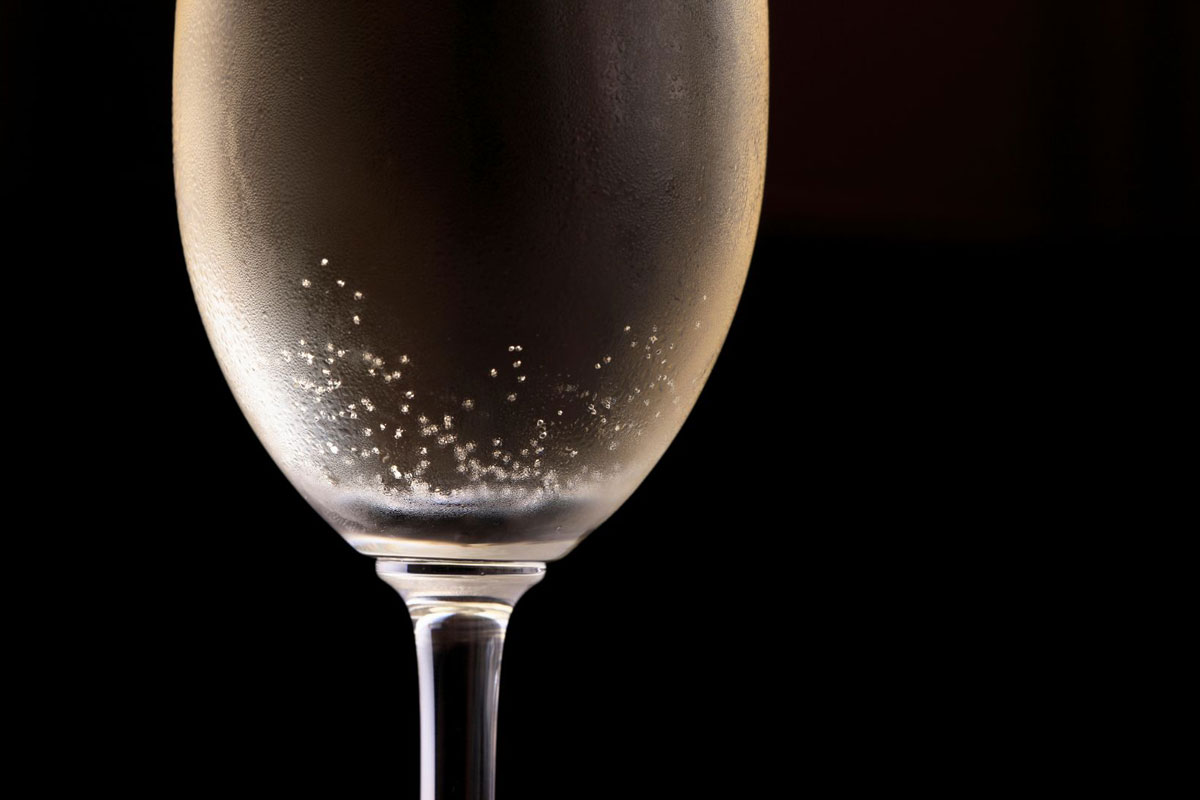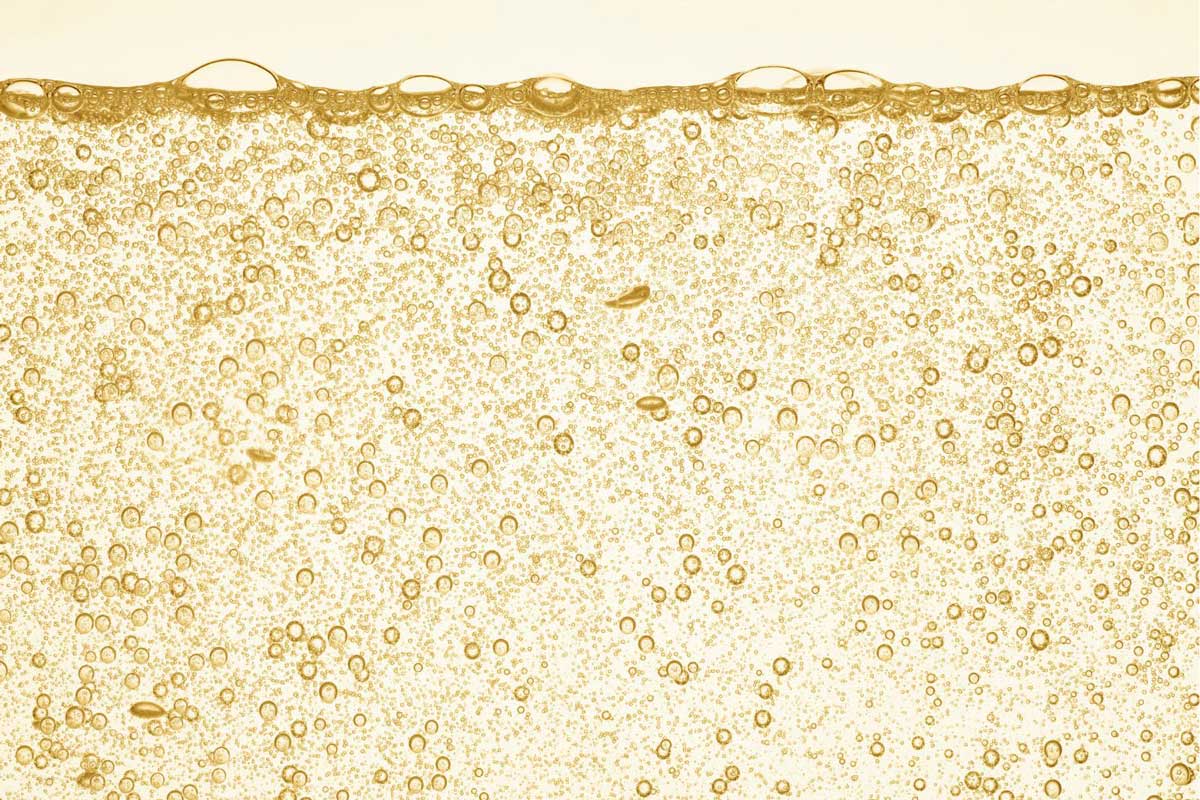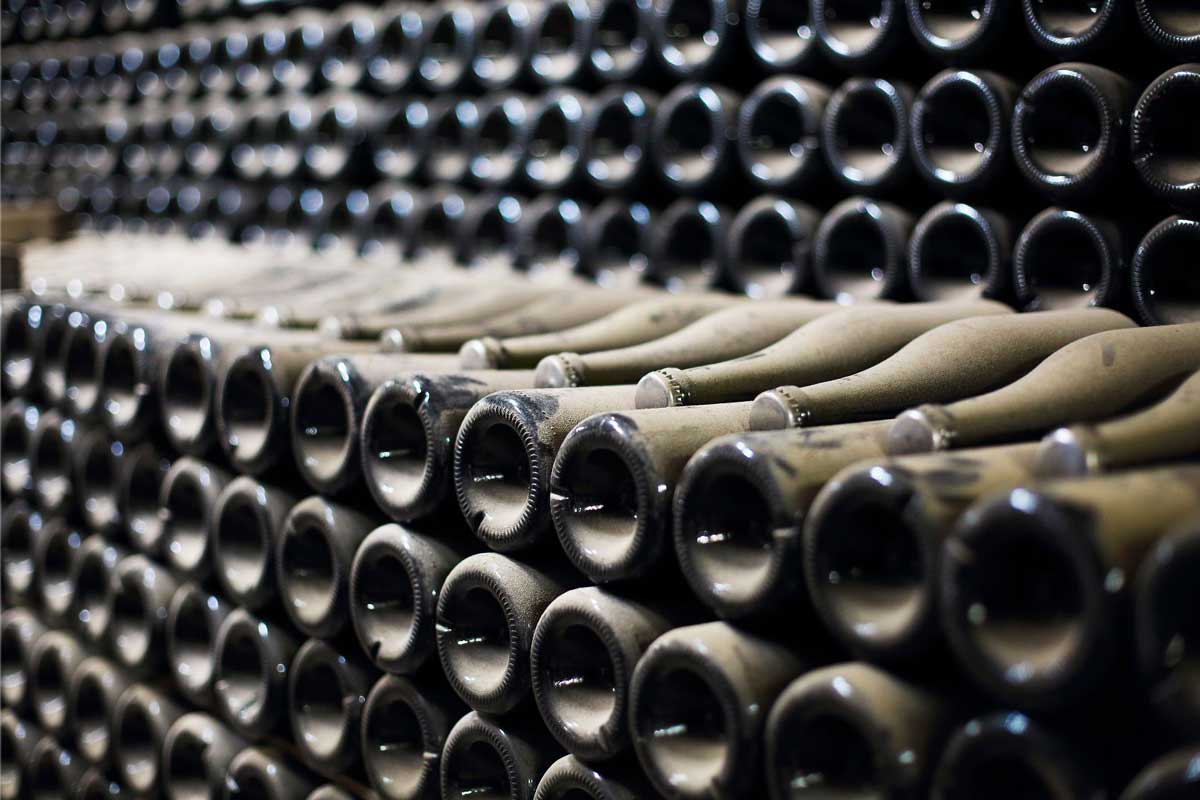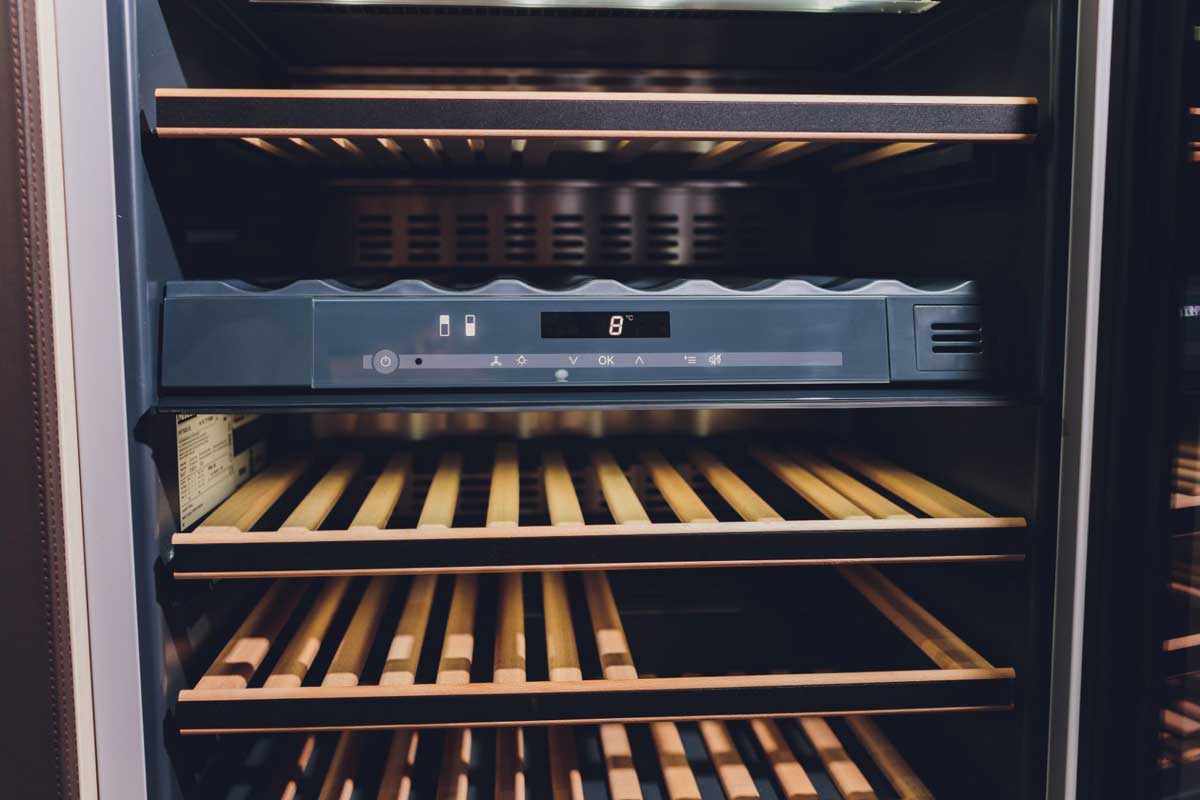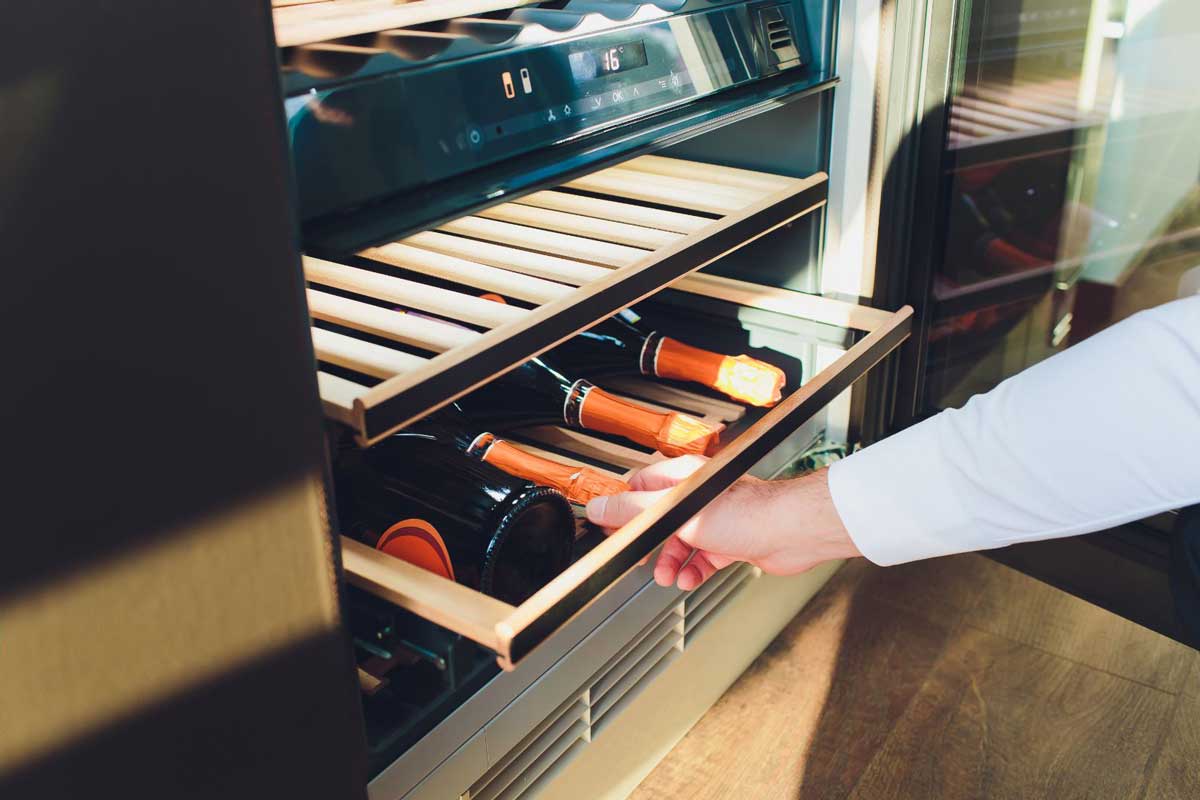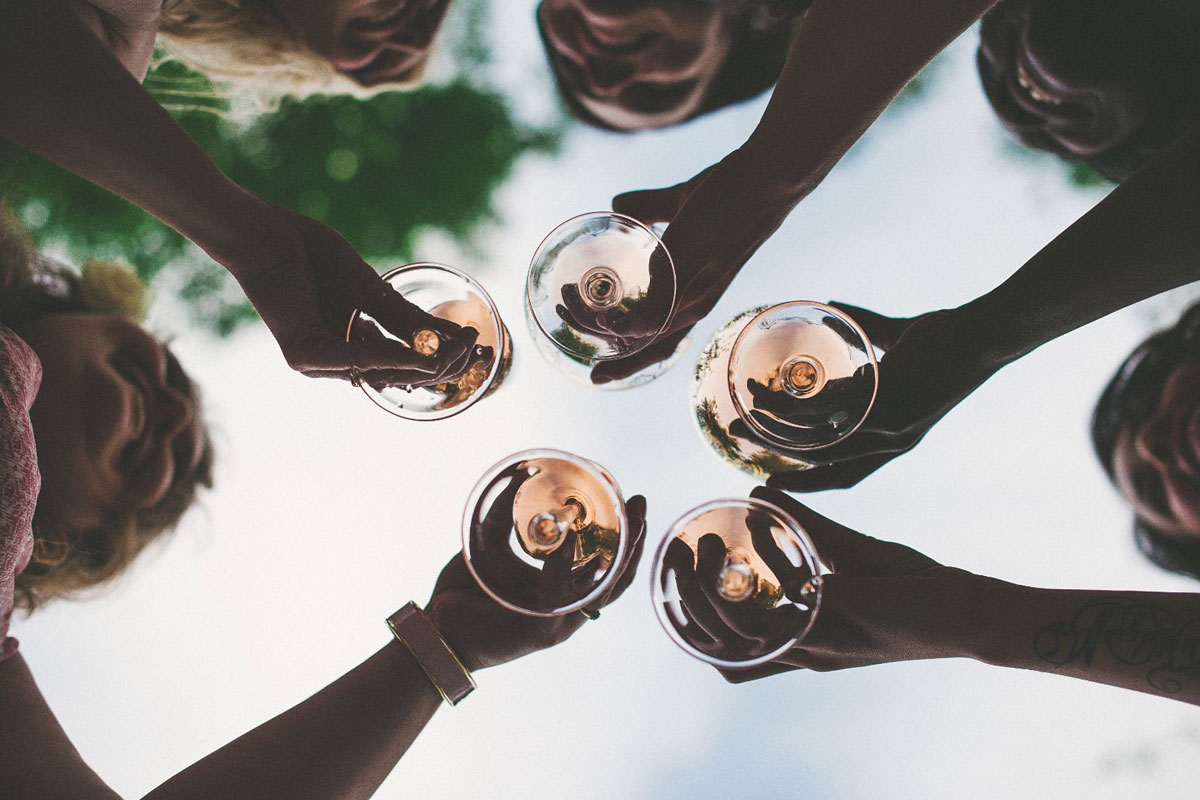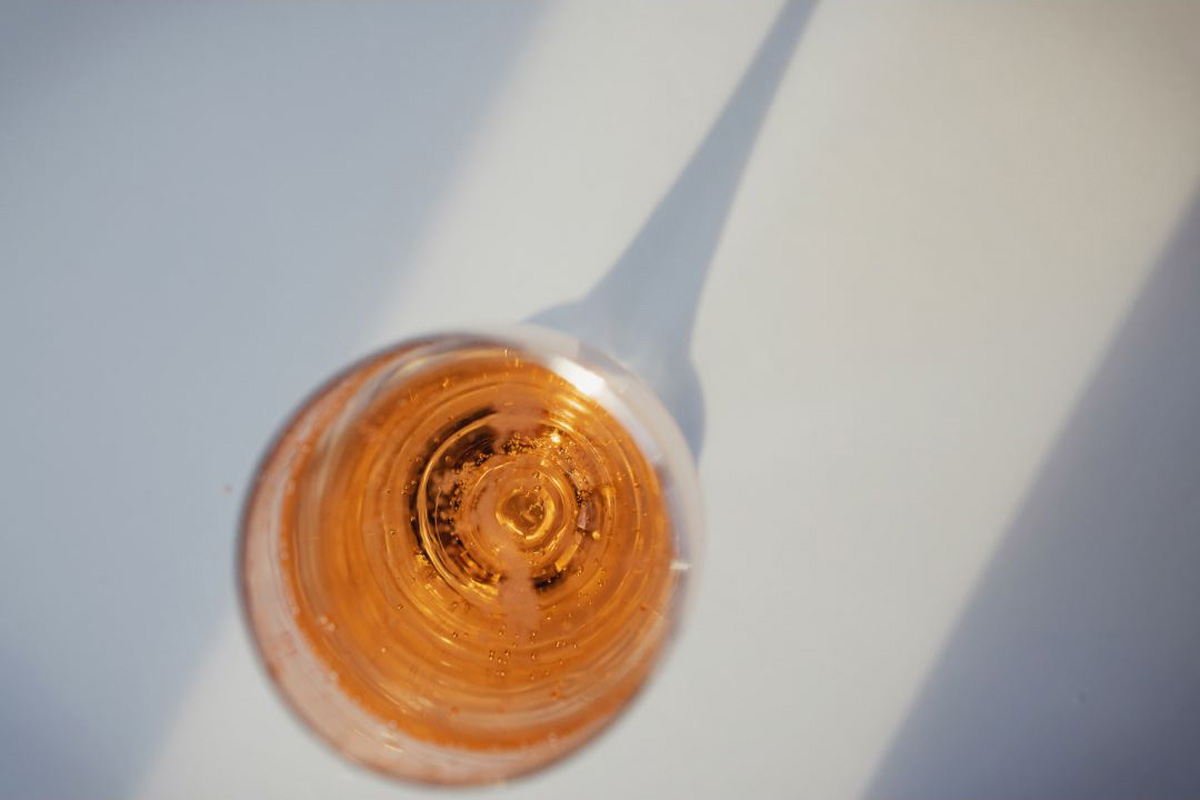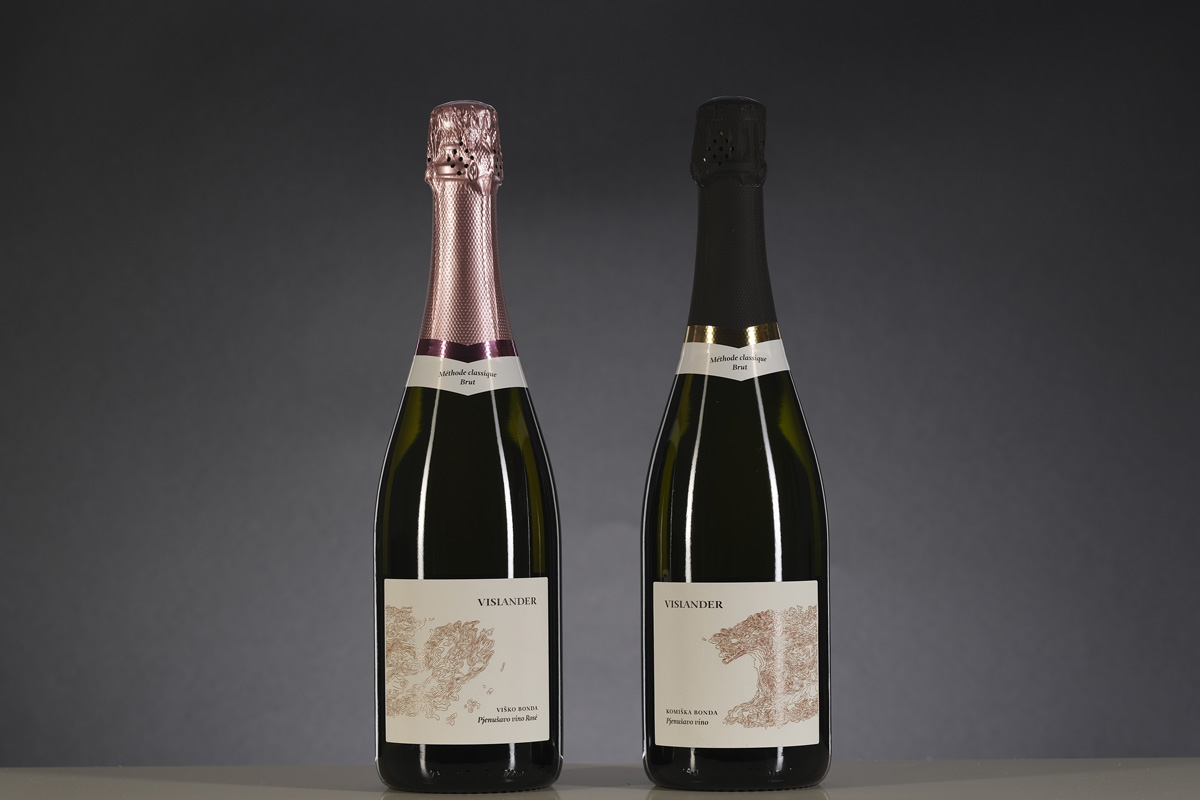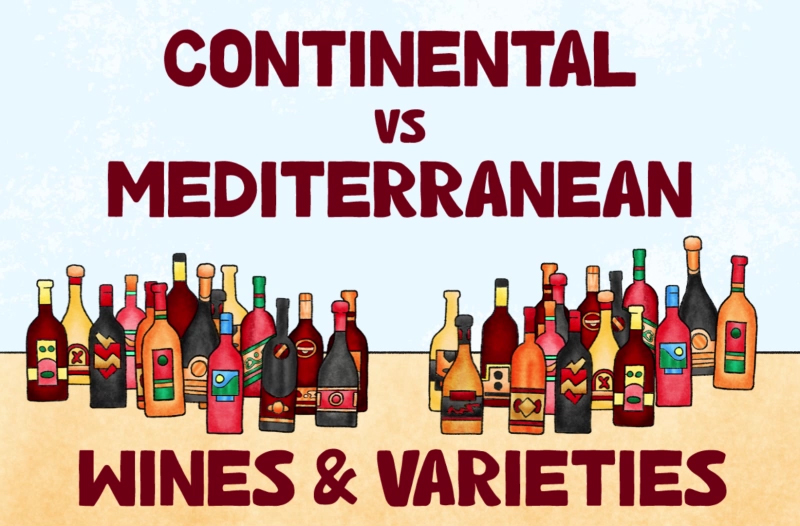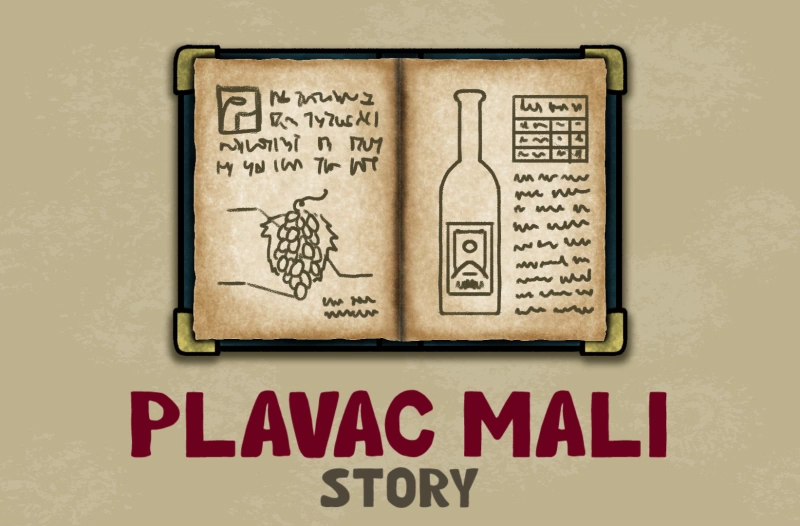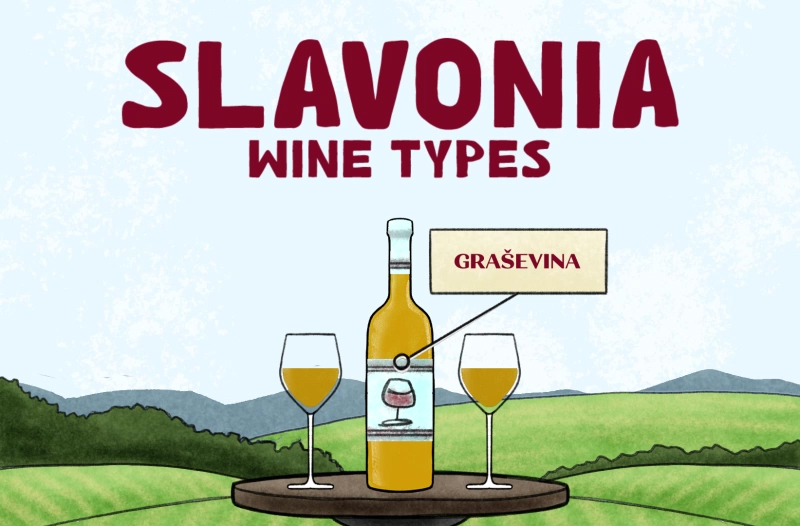Discover the Coolest Sparkling Wines Trends Now: Dalmatian Sparkling Wines
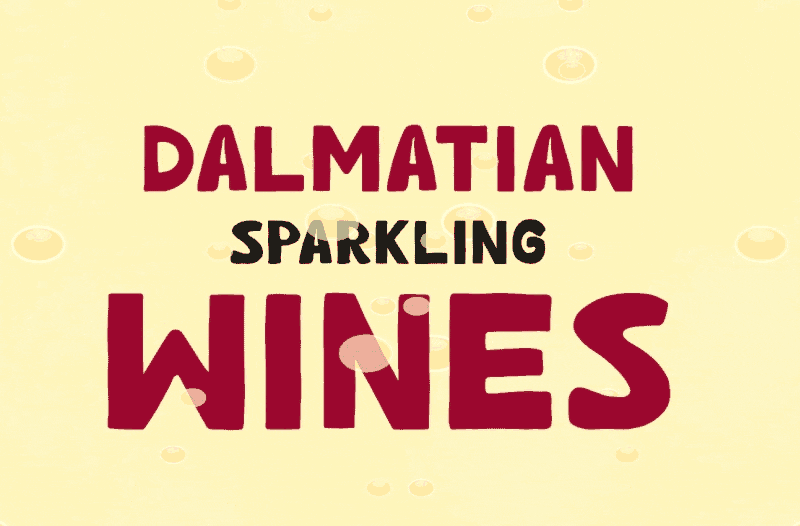
So, welcome to the world of Sparkling Wine, where every bubble tells a story of celebration and refinement. Discover the charm of Sparkling Wine in this article, and delve into the fine art of creating and enjoying sparkling wines.
Sparkling Wine: A Brief Overview
Sparkling wine is a type of wine that contains significant levels of natural gas (carbon dioxide), making it fizzy. The carbonation can occur naturally through the traditional, also known as Champenoise method, where the wine undergoes a second fermentation in the bottle, or through carbonation methods like the Charmat method, where the second fermentation occurs in a large tank before bottling.
There are other methods developed throughout history, often as a compromise due to limited resources and other circumstances. Some of those are gaining popularity, a famous PetNats being the perfect example.
What wines are considered sparkling?
If you cannot tell the difference, then every single wine with effervescence is considered sparkling.
But there is an abyss of difference between some gulp of wine with artificially added carbon dioxide and meticulously blended “Grand Cru”-sourced Champagne.
Sparkling wines can be made from various grape varieties, including Chardonnay, Pinot Noir, and Pinot Meunier for Champagne. Some varieties and certain climates are more suited for traditional method sparkling wines, but today the number of varieties for making sparkling wine is almost limitless.
Two of the most sparkling wine styles are determined (and protected) by designation of origin: Champagne and Prosecco.
But there are many other types of sparkling wine, many with their own tradition: Cava in Catalunya, Cremant in Loire or Alsace, and various frizzante styles in Italy (like Lambrusco or Moscato D’Asti), to name but a few…
Sparkling Wine Styles
It is helpful to differentiate between three general groups:
- Champagne style (Traditional or Champenoise method)
- Prosecco style (Charmat or Martinotti method)
- Others (that do not belong to either, such as Ancestral method or PetNat wines)
Champagne-style sparkling wine
The most famous sparkling wine is Champagne, which comes from the Champagne region in France and is often associated with celebrations and special occasions.
However, sparkling wines in that style are produced in many regions worldwide, but they cannot be called Champagne. It is curious how California producers, for example, do not comply with the protection of Champagne and name their sparkling wines as Champagnes.
Yet, as a consumer, you should know that the name Champagne itself is very generic and does not guarantee the expected quality.
Since Champagne has been under the magnifying glass for centuries now, it is usually based on the you-get-what-you-paid-for principle, with few notable exceptions. Some extravagant prices are hardly justified by anything other than centuries of marketing, and very few unknown growers are fanatical enough to create value above the price tag.
Prosecco-style sparkling wine
Anything bubbly that is made in pressurised tanks can generally be considered a Prosecco-style sparkling wine.
The beauty of Prosecco is in its simplicity. And that simplicity is only seemingly simple. The right balance of Prosecco is perhaps less “magical” compared to Champagne, but it is also an art.
Most people do not need the peculiar nuances and structure of some expensive bottle of Champagne. At least not for regular consumption, even if they could afford it.
That is the reason why Prosecco-style is the most popular sparkling wine style in the world.
The Prosecco method is quicker and less expensive than the traditional method used for Champagne, where the second fermentation happens in each individual bottle.
Prosecco-style sparkling wines are typically made from the Glera grape. The Prosecco method preserves the fruity and floral characteristics of the grapes, resulting in a fresh and approachable sparkling wine with a light and crisp profile.
Other sparkling wine styles
Other sparkling wine styles are not Cava, Cremant, Sekt, etc. These are basically different (historical) names for sparkling wines made under either Champagne or Prosecco methods.
Other sparkling wines refer to the tradition of creating bubbles in wine with different methods:
- Col Fondo Prosecco in Italy
- Uhudler in Austria
- Other Ancestral method
Most of these regained popularity under the name “PetNat”, which is short of Petillant Naturel.
PetNat has become a trendy term for sparkling wines made using the Ancestral Method. It emphasises the natural and often slightly effervescent quality of the wine. PetNats can be found in various regions and with different grape varieties, showcasing winemakers’ creativity.
For example, Col Fondo is a style of Prosecco that involves leaving the lees (sediment) in the bottle, providing a cloudy appearance. This method is a nod to the modern way Prosecco is made and has gained popularity for its rustic and unfiltered character.
Is Sparkling Wine suitable for ageing?
While most sparkling wines are crafted to be enjoyed young and fresh, certain types of sparkling wines can benefit from ageing.
The ageing potential of a sparkling wine depends on factors such as the production method, grape varieties used, and the wine’s overall structure.
High-quality Champagne and other sparkling wines produced using the traditional method can from ageing more often. The extended time spent on the lees (dead yeast cells) during the secondary fermentation in the bottle contributes to the development of complex flavours and aromas.
Best Champagne sparkling wines are known for their ability to age gracefully, improving over several years and more. For example, vintage Champagnes or vintage-dated sparkling wines made in the Champagne method, which are made from grapes harvested in a specific year, are often candidates for ageing.
Also, some special cuvées or blends of sparkling wine known as Prestige Cuvées are often made from the best grapes and may see extended ageing before release. They are crafted with the intention of being suitable for ageing. Both in the cellar and after disgorgement.
How should Sparkling Wine be stored?
Storing sparkling wine properly is crucial to maintain its quality, effervescence, and flavour. Here are some general guidelines on how to store sparkling wine:
- Temperature: Sparkling wine should be stored in a consistently cool and slightly humid environment. The ideal temperature range is around 5-10°C (41-50°F). It’s good news because most regular refrigerators are suitable for storing sparkling wines. A stable environment is key, as fluctuations in temperature and humidity can adversely affect the sparkling wine.
- Humidity: Maintain a higher humidity level to prevent the cork from drying out. Regular refrigerator conditions might not be ideal, but it helps to store sparkling wine bottles horizontally. That way, the cork bottom is constantly soaked, and the pressure inside the bottle is evenly spread.
- Darkness: Protect sparkling wine from direct sunlight and fluorescent light, which can lead to premature ageing and spoilage. UV rays can be particularly harmful to the wine. This is not important for regularly storing Sparkling wines that will be consumed within several months.
- Position: Store sparkling wine bottles horizontally or at a slight angle with the cork facing down. This keeps the cork in contact with the wine, preventing it from drying out and allowing a small amount of carbon dioxide to remain in contact with it, helping preserve effervescence.
- Vibration: Minimize vibrations, as they can disturb the sediment in sparkling wine and affect its quality. Choose a stable storage location away from appliances or areas prone to frequent movement.
- Odour-Free Environment: Free the storage area from strong odours, as sparkling wine can absorb odours through the cork. Avoid storing it near items with strong smells, such as cleaning supplies or spices.
By following these guidelines, you can help preserve the quality and characteristics of your sparkling wine, ensuring a delightful and effervescent experience when you decide to open a bottle.
Is Sparkling Wine only for special occasions?
Sparkling wines are definitely not reserved for special occasions only. In fact, it tells a lot about your background, upbringing and life experience if you are keeping that one cheap sparkling wine bottle for some anniversary celebrations.
Sparkling wines are enjoyed everywhere and all the time. Though you might not be popping a Grande Marques vintage Champagne every other Tuesday, sparkling wines are an ideal company for any occasion, from a simple meal to a gala dinner party.
Actually, sparkling wines are designed to be enjoyed as an ideal aperitif before regular lunch or dinner.
The level of sweetness in sparkling wine varies, ranging from very dry (Extra Brut) or even without dosage (Brut Nature) to sweet (Demi-Sec).
Before meals, drier versions are usually served to open up your appetite. More structured sparkling wines can accompany many dishes. And sweeter versions are usually for desserts or, after a meal, to be enjoyed on their own.
To summarise, high-quality sparkling wines, regardless of a particular style, are available at different prices, making them accessible for everyday enjoyment. While sparkling wine is often associated with celebrations, its versatility, diversity, and accessibility make it a delightful choice for everyday enjoyment.
What is the popular sparkling wine?
Regarding revenue, Champagne uses its “brand recognition” well and has the highest annual turnover. However, Prosecco is the world’s leader in terms of bottles sold.
Perception of Champagne built through centuries still makes it a King of Sparkling Wine. Produced in the Champagne region of France, it has become synonymous with luxury and celebration.
A surge in the popularity of Prosecco is no longer a global phenomenon. Originally from the Veneto region in Italy, Prosecco is becoming a synonym for light and refreshing sparkling wine you can afford.
Sparkling Rose is a style of sparkling gaining popularity for their vibrant colour and diverse flavour profile. After a recent addition, Prosecco can also be made in rose-style sparkling, using the same grape allowed in Champagne, Pinot Noir.
Along with Chardonnay, it is still one of the dominant varieties grown for sparkling wine globally.
However, more and more local and indigenous varieties are showing excellent results when vinified as sparkling wines. Different wine varieties and additional production methods increase the diverse world of sparkling wines.
Various wineries worldwide are gaining recognition for their sparkling wine programs. Looks like the world of sparkling wine is continually evolving, with new and innovative expressions emerging from different regions.
Where are sparkling wines made?
France, Italy, and Spain make around 85% of the sparkling wine in the world. But there is more than Chardonnay, Pinot Noir, or Glera to be experienced.
Even in France, there is much to be “discovered”, especially regarding value for money, because France’s sparkling wine is more than Champagne. The Cremants, particularly from Loire Valley or Alsace, have been expressing exciting experiences for sparkling wine lovers for ages now.
Italy is also more than Prosecco, with excellent sparkling wines from Franciacorta to Asprinia in the South.
And we haven’t even mentioned the Spain Cava tradition…
Or, if you feel Greek Xinomavro is unsuited to be made as sparkling wine, think again. The same certainly goes for Austrian, German, Hungarian, and, due to climate change, increasingly, England’s sparkling wine!
But before we venture to the New World successes, stop to acknowledge the Croatian sparkling sensations.
Croatian Uplands wineries have been making world-class sparkling wines for decades now. Slowly but surely, the wineries of Dalmatia are joining them.
The Rise of Dalmatian Sparkling Wines
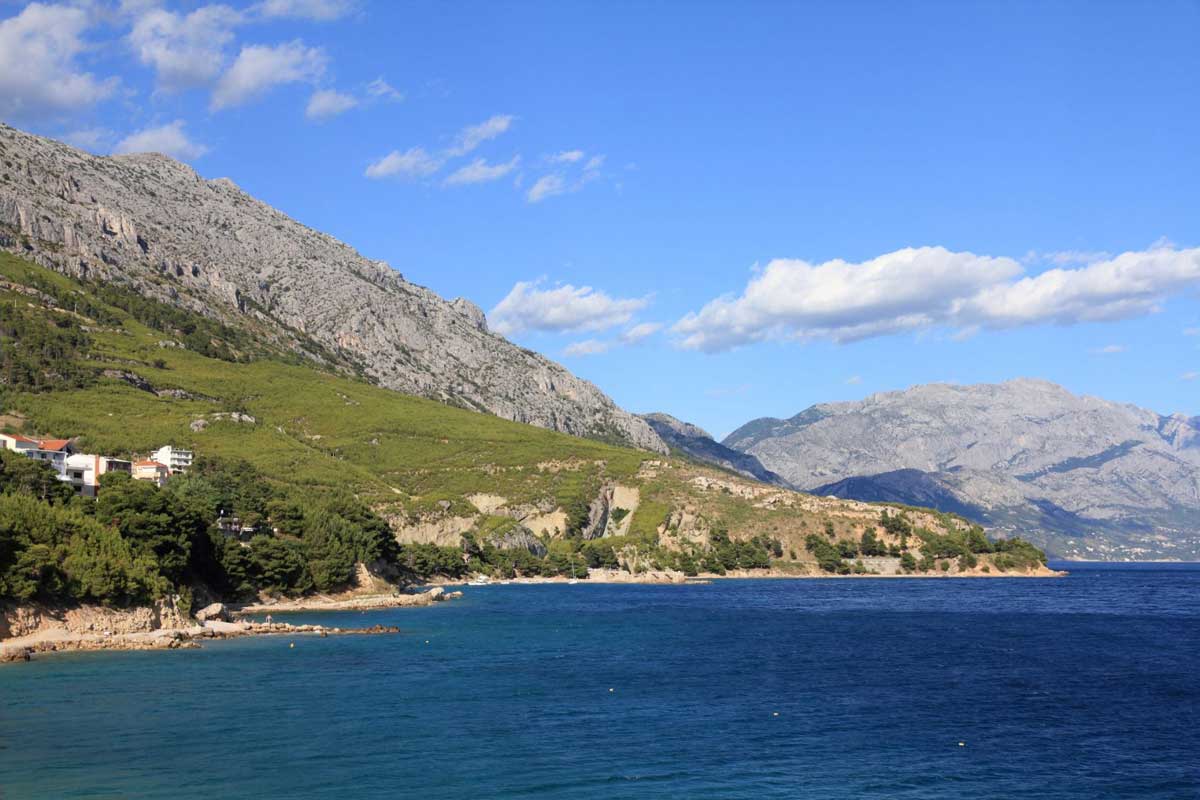
Rather, it’s a wine that follows the same frame, only achieving something unique. Uniqueness comes not from technology alone but from a character inherited in local indigenous varieties.
And Dalmatia is full of those. There are many successful examples of sparkling wines made in Champagne or the Prosecco method, based on Dalmatian varieties.
Have you tasted sparkling Debit, Maraština, Pošip, Vugava, Grk, or even sparkling wine from the red variety Plavac mali?
Wine Tasting Extravaganza: Vislander
Among all the islands known for wine in Dalmatia, Vis is the most mystical somehow. Unlike steep slopes overlooking the deep blue Adriatic Sea, considered prime vineyard positions on other Dalmatian Islands, Vis holds its treasure closer to its chest.
The finest grapes are grown in karst fields in the island’s interior.
Komiška Bonda
Sparkling wine is produced using the classic (Champenoise) method of secondary fermentation in the bottle.
The base wine is from Kuč variety (a local clone of Trebbiano Toscano), which produces fresh, lighter wines with pronounced acids, the ideal base for sparkling wines.
Vugava variety was added in a smaller percentage, harvested at the moment of technological maturity, suitable for producing sparkling wines.
After the primary fermentation, the base wine is bottled for secondary fermentation. The bottles age for at least one year. Before disgorging, the bottles are rotated from horizontal to vertical in the gyro turner, and the resulting sediment settles in the neck of the bottle. Through the disgorgement process, the sediment created in the secondary fermentation is removed by freezing the tops of the bottles at -25 °C, after which the bottles are opened, and the created pressure ejects the sediment. The bottles are then filled with liqueur d’Expedition, topped up and closed with special cork stoppers on which wire nets are placed to secure the stoppers since the bottles are under pressure.
Tasting notes reveal its nature. Despite the sunlight’s embrace, a greenish-yellow symphony beckons with promises of subtlety and refinement.
As the elixir meets the senses, a fresh breeze of apricots and pears creates a fruity intensity.
On the palate, the liquid poetry, intense and captivating, wraps the taste buds in a pleasant, enduring pearling. Playful acids leave a lingering trail of delight. Amid this dance, delicate fruit flavours emerge like hidden gems into a subtle finale of roasted nuts.
In each effervescent sip, a story confirms, making these first sparkling wines from Vis Island not just a libation but a cherished ode to festive and mundane moments alike.
Viško Bonda
Also, a sparkling wine made under the same Champagne method, with one important difference.
The base wine for the rosé sparkling wine is also produced from Kuč as the main variety but with a small but significant addition of Plavac mali grape, grown lighter in body with more pronounced acidity.
Bathed in soft pink radiance, this inaugural Vis sparkling rose embodies lightness, freshness, and delightful airiness.
The aroma unfolds red berries interwoven with subtle Mediterranean herbs, creating a sensory kaleidoscope that captivates the senses in the most sophisticated manner.
On the palate, the harmony continues, revealing a delightful pearling that lingers with each sip. Playful acids dance across the tongue while gentle umami appears, calling for some carpaccio.
The effervescent pink pleasure with a vinous backbone expresses a unique character, just like the place it comes from.
Conclusion: A Toast to Dalmatian Sparkling Wines
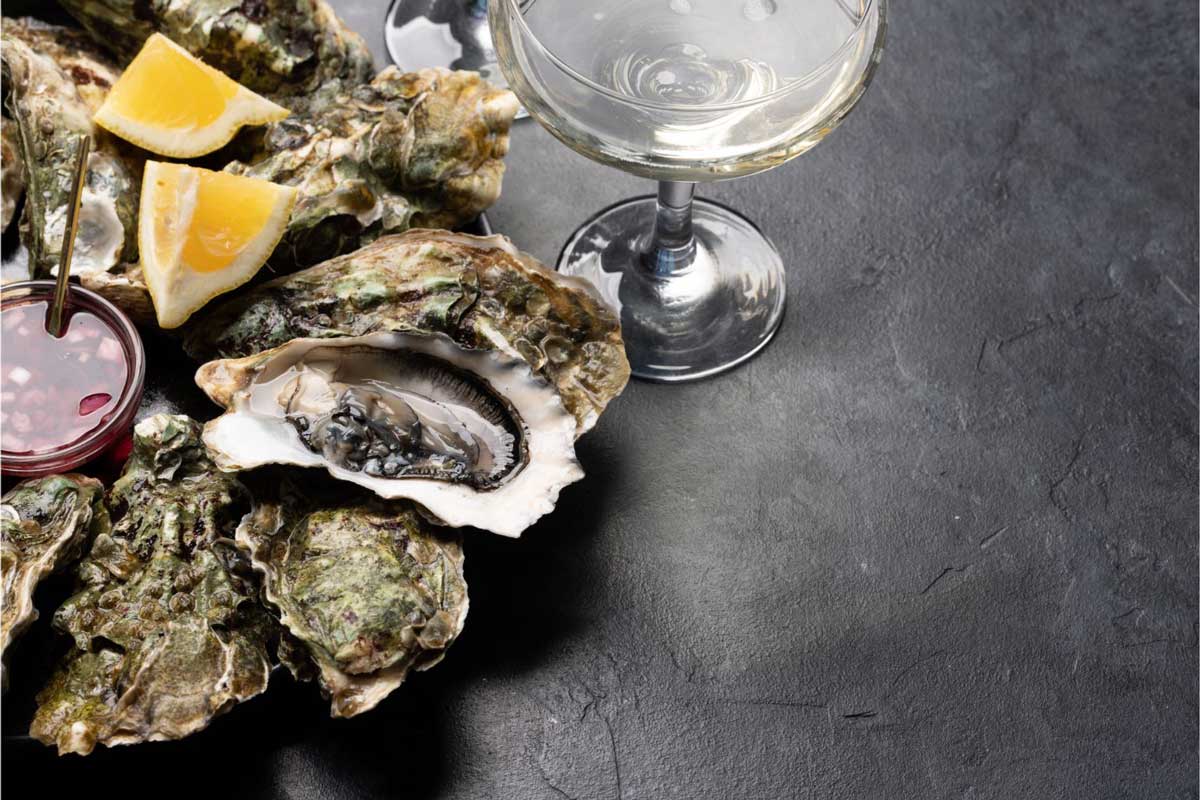
Beyond the glitz of Champagne’s brand recognition and the widespread allure of Prosecco, the spotlight turns to Croatia’s Dalmatian region. Here, amidst karst fields and mystical landscapes, winemakers craft sparkling wonders celebrating special occasions and everyday moments alike.
The rise of Dalmatian sparkling wines is not just a replication of successful winemaking methods. Dalmatian grapes like Debit, Maraština, Pošip, Vugava, Grk, and the red Plavac mali offer a uniqueness that reflects the region’s character in a most elegant way.
The Viško Bonda and Komiška Bonda are the two sparkling jewels from the island of Vis, presenting freshness, subtlety, and refined delight
As we conclude this sparkling odyssey, allow us to celebrate the uniqueness of Dalmatian sparkling wines and toast to the evolving world of sparkling delights globally.
From the storied cellars of Champagne to the sun-kissed vineyards of Dalmatia, the effervescence of sparkling wines continues to captivate, surprise, and delight the palates of wine enthusiasts worldwide.
Here’s to the sparkle in every bubble, the stories in every sip, and the timeless joy that sparkling wines bring to our glasses and moments of celebration. Cheers to the world of sparkling delights, where every bubble tells a tale of craftsmanship, tradition, and the diverse landscapes that nurture these liquid gems.



